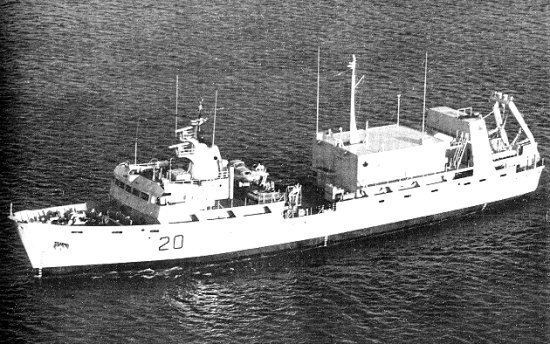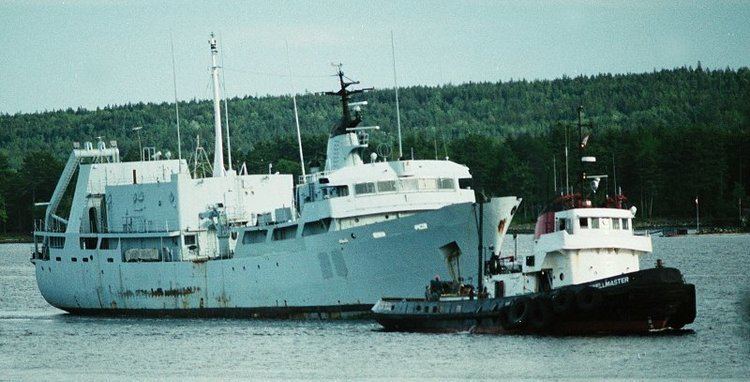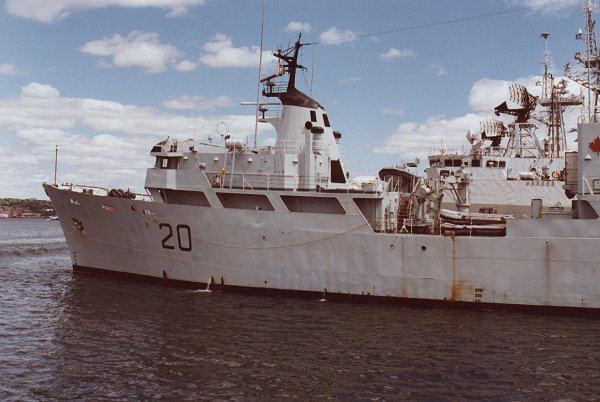Name Aspa Quarto Launched 11 April 1965 Out of service 1975 Weight 2,350 tons Draft 5.18 m | Laid down 8 December 1963 Completed 15 June 1965 Length 75 m Displacement 2.35 million kg | |
 | ||
Builder Cantiere Navale Apuania, Marine-Carrara, Italy | ||
HMCS Cormorant was a diving support vessel that served in the Canadian Forces. She was equipped with either Pisces IV submersible or the SDL-1 submersible. The ship was the first in the Canadian Forces to have women assigned to their crew. Initially constructed as the trawler Aspa Quarto in 1965, the ship was acquired by the Canadian Forces in 1975 and renamed Cormorant. The vessel remained in service until 1997 when Cormorant was sold to a US buyer. The ship was laid up and is awaiting disposal.

Service history

The vessel was built as the Italian-owned stern trawler Aspa Quarto at Cantiere Navale Apuania, Marine-Carrara in Italy. Aspa Quarto was laid down on 8 December 1963, launched on 11 April 1965 and completed on 15 June 1965. She was purchased in July 1975 and taken to Davie Shipbuilding at Lauzon, Quebec where the ship underwent conversion to a diving support vessel. The ship was commissioned into Maritime Command on 10 November 1978 at Lauzon, becoming the second Canadian naval unit to bear this name.

In 1980, the first mixed gender crew trial took place aboard Cormorant in response to the recommendations of the Royal Commission on the Status of Women. The trial lasted until 1984.

Between 23 August and 5 October 1989, Cormorant and CFAV Quest conducted defence research as part of Operation Norploy 89, which took place in the Arctic region of Canada, mainly in Baffin Bay, Lancaster Sound and Davis Strait. Using the submersible SDL-1 deployed from Cormorant, the sunken vessel Breadalbane was discovered, a ship not seen since its sinking in 1853.

Cormorant was an integral part of the November 1994 expedition to recover the ship's bell from the wreck of SS Edmund Fitzgerald in Lake Superior.

She was decommissioned on 2 July 1997 and sold to United States owners for diving operations. The ship underwent conversion to an offshore support vessel in 1998 however the ship was docked in Bridgewater, Nova Scotia in 2000 and has remained there. As of March 2015, the ship has developed a severe list. As of 21 March 2015, the ship had sunk due to the amount of ice on the deck. The Canadian Coast Guard took control of the salvage effort in May due to pollution concerns.
As of 29 May 2015, the ship has been refloated with the list reduced to 8 degrees. Salvage was anticipated to be completed in another week.
The ship's bell of HMCS Cormorant is currently on loan to a Navy League Cadet Corps in British Columbia. The Christening Bells Project at Canadian Forces Base Esquimalt Naval and Military Museum includes information from the ship's bell of HMCS Cormorant, which was used for baptism of babies onboard ship.
